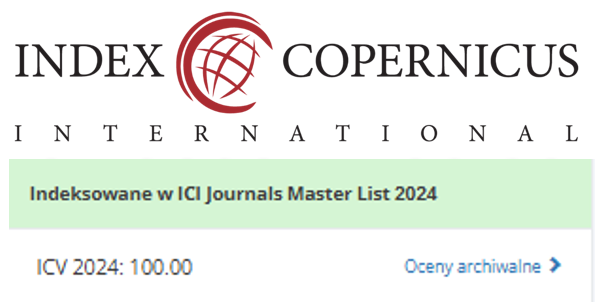Guidelines for Systematic-Meta Analyses
-
- Describe the processes to decide which studies were eligible for each synthesis (e.g., tabulating the study intervention characteristics and comparing against the planned groups for each synthesis ).
- Describe any methods required to prepare the data for presentation or synthesis, such as handling missing summary statistics or data conversions.
- Describe any methods used to tabulate or visually display the results of individual studies and syntheses.
- Describe any methods used to synthesize results and provide a rationale for the choice(s). If meta-analysis was performed, describe the model(s), method(s) to identify the presence and extent of statistical heterogeneity, and software package(s) used.
- Describe any methods to explore possible causes of heterogeneity among study results (e.g., subgroup analysis, meta-regression).
- Describe any sensitivity analyses conducted to assess the robustness of the synthesized results.
- When submitting, the content explanation and writing guidelines in this template must be removed.
- Articles submitted to the JANH should not exceed 5000 words for the main text, including abstract, tables, and references. But, in some cases, 7,000 words are allowed if needed.
- Important to note: Use Mendeley Desktop (Download for Free) as a reference management tool.", following the APA 7th edition style. The reference list should include at least 20 references, with sources no older than 5 years.
Title
- A clear and specific title containing key terms, subjects, methodology, and research significance (e.g., improvement, reduction, impact, effectiveness, efficacy), with a length of 10–16 words. The title should contain a descriptor that best describes the type of review, such as: ‘Systematic review’, ‘Meta-analysis’, 'Systematic review and meta-analysis', and others.
Abstract
Background: One or two sentences of background, the purpose of the study
Methods: Design, Data Sources, include search dates, Review Methods, eligibility criteria, sources of evidence, charting methods,
Result: "Present the identified themes and subthemes derived from the mapping results."
Conclusion: Present the main research conclusions and provide recommendations based on the findings.
Implications for clinical practice: highlight how research findings can be applied to improve patient care, clinical decisions, and healthcare policies.
Keywords: 3–6 words or short phrases allowing proper and convenient indexing.
(For keywords of an abstract)
- Click MeSH on Demand
- Authors Copy and paste the abstract to the Table of MeSH on Demand,
- Click Search.
- Next, you will see some blocked words, which can be used as keywords.
Introduction
- Include background and rationale, conceptual or theoretical context, international relevance of topic, and aim (Describe the current state of knowledge and its uncertainties.
- Articulate why it is important to do the review.
- If other systematic reviews addressing the same (or a largely similar) question are available, explain why the current review was considered necessary. If the review is an update or replication of a particular systematic review, indicate this and cite the previous review.
- If the review examines interventions' effects, briefly describe how the intervention(s) examined might work.
- If there is complexity in the intervention or context of its delivery (or both) (e.g., multi-component interventions, equity considerations), consider presenting a logic model to display the hypothesized relationship between intervention components and outcomes visually.
- Objectives: Provide an explicit statement of all objective(s) or question(s) the review addresses, expressed in terms of a relevant question formulation framework. If the purpose is to evaluate the effects of interventions, use the Population, Intervention, Comparator, Outcome (PICO) framework or one of its variants to state the comparisons that will be made.
Methods
Protocol And Registration
- Indicate whether a review protocol exists; state if and where it can be accessed (e.g., a Web address); and provide registration information, including the registration number if available.
- If you haven't done so yet, register for free on Prospero.
Eligibility Criteria
- Specify the inclusion and exclusion criteria for the review and how studies were grouped for the syntheses.
Information Sources
- Specify all databases, registers, websites, organizations, reference lists, and other sources searched or consulted to identify studies. Specify the date when each source was last searched or consulted.
Search Strategy
- Present the full search strategies for all databases, registers, and websites, including any filters and limits used.
Selection Process
- Specify the methods used to decide whether a study met the review's inclusion criteria, including how many reviewers screened each record and each report retrieved, whether they worked independently, and, if applicable, details of automation tools used in the process.
Data Collection Process
- Specify the methods used to collect data from reports, including how many reviewers collected data from each report, whether they worked independently, any processes for obtaining or confirming data from study investigators, and, if applicable, details of automation tools used in the process.
Data Items
- List and define all outcomes for which data were sought. Specify whether all results compatible with each outcome domain in each study were sought (e.g., for all measures, time points, analyses), and if not, the methods used to decide which results to collect.
- List and define all other variables for which data were sought (e.g., participant and intervention characteristics, funding sources). Describe any assumptions made about any missing or unclear information.
Study Risk Of Bias Assessment
- Specify the methods used to assess the risk of bias in the included studies, including details of the tool(s) used, how many reviewers assessed each study whether they worked independently, and if applicable, details of automation tools used in the process.
Effect Measures
- Optional for Systematic review
- Specify for each outcome the effect measure(s) (e.g., risk ratio, mean difference) used in synthesizing or presenting results.
Synthesis Methods
Reporting Bias Assessment
- Describe any methods used to assess bias risk due to missing synthesis results (arising from reporting biases).
Certainty Assessment
- Describe any methods used to assess certainty (or confidence) in the body of evidence for an outcome.
-
Results
Study Selection
- Describe the search and selection process results, from the number of records identified in the search to the number of studies included in the review, ideally using a flow diagram. Cite studies that might appear to meet the inclusion criteria but which were excluded, and explain why they were excluded.
Study Characteristics
- Cite each included study and present its characteristics
Risk Of Bias in Studies
- Present assessments of risk of bias for each included study.
Results Of Individual Studies
- For all outcomes, present, for each study: (a) summary statistics for each group (where appropriate) and (b) an effect estimate and its precision (e.g., confidence/credible interval), ideally using structured tables or plots.
Results Of Syntheses
- For each synthesis, briefly summaries the characteristics and risk of bias among contributing studies.
- Present results of all statistical syntheses conducted. If meta-analysis was done, present for each the summary estimate and its precision (e.g., confidence/credible interval) and measures of statistical heterogeneity. If comparing groups, describe the direction of the effect.
- Present results of all investigations of possible causes of heterogeneity among study results.
- Present all sensitivity analyses conducted to assess the robustness of the synthesized results.
Reporting Biases
- Present assessments of risk of bias due to missing results (arising from reporting biases) for each synthesis assessed.
Certainty Of Evidence
- Present assessments of certainty (or confidence) in the body of evidence for each outcome assessed.
Discussion
- Provide a general interpretation of the results in the context of other evidence.
- Discuss any limitations of the evidence included in the review.
- Discuss any limitations of the review processes used.
- Discuss the implications of the results for practice, policy, and future research.
Relevance to Clinical Practice
- Improvement in Patient Care – How the findings enhance diagnosis, treatment, or patient outcomes.
- Guidance for Clinical Decision-Making – Impact on healthcare professionals' choices and interventions.
- Enhancement of Clinical Protocols – Potential updates to guidelines, procedures, or best practices.
- Efficiency and Safety – How the research improves workflow, reduces risks, or enhances patient safety.
- Policy and Education Impact – Influence on healthcare policies, staff training, or professional development.
Conclusion
- Provide a general interpretation of the results with respect to the review questions and objectives, as well as potential implications and/or next steps.
- This should not be a summary/repetition of the findings.
References
- Use Mendeley Desktop (Download for Free) as a reference management tool.
- Reference writing style: APA 7th Edition.
- Reference minimum of 20 references from reputable articles or journals, published within the last 5 years, with at least 80% from journals.
- Provide the DOI or URL for each cited article.
- Do not use abstracts as references.
- Cite unpublished manuscripts as "unpublished observations" with written permission. Papers accepted but not yet published should be marked as "Forthcoming" with the journal name.
- Avoid citing "personal communication" unless essential. If necessary, include the person's name, date, and obtain written permission.
- Click Here[Exemple of References]

















